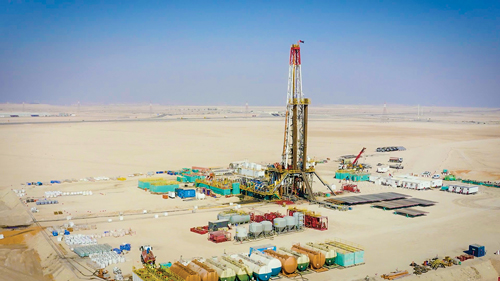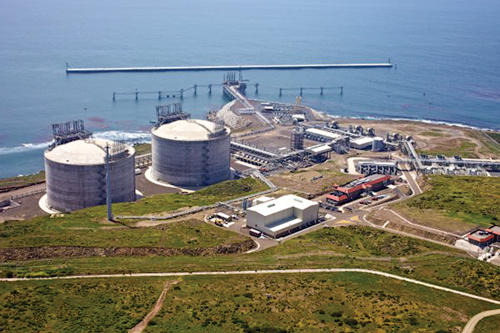Gas Processing News
U.S. FERC approves Alaska LNG import project
U.S. energy regulators approved a plan by Marathon Petroleum Corp.’s Trans-Foreland Pipeline Co. LLC unit to convert the Kenai LNG export plant in Alaska into an import terminal. Trans-Foreland has 2 yr to put the proposed project into service.
The facility would import up to four tanker loads of LNG per year and use its boil-off gas management system to deliver imported gas to the adjacent Kenai refinery. The Kenai LNG export plant entered service in 1969, but it has not exported LNG since 2015.
Nikkiso Cryogenic sells turbo line to Air Liquide
Nikkiso Cryogenic Industries’ Clean Energy and Industrial Gases Group, part of Nikkiso Co. Ltd. of Japan, announced the sale of its Turboexpander Business Line to Air Liquide in January. The Turboexpander Business Line designs, manufactures and sells turboexpanders within the industrial gas and NGL industries.
Nikkiso’s Cryogenic Service unit will remain an authorized service company and will continue to provide aftermarket services, including repair and servicing of ACD designed and built turboexpander machines, while Air Liquide will provide service activities to its plants and its third-party plant customers. The acquisition was effective January 1, 2021.
Double E seeks approval for Texas-New Mexico gas pipeline
Double E Pipeline LLC has asked U.S. energy regulator FERC for permission to start building its natural gas pipeline project in Texas and New Mexico. Double E is owned by units of Summit Midstream Partners LP (70%) and ExxonMobil Corp. (30%).
Double E Pipeline LLC plans to build a 135-mi (217-km) pipeline to transport 1.35 Bft3d of gas from the Delaware Basin in the Permian Shale in New Mexico and Texas to the Waha Hub in West Texas. Double E is one of several pipelines proposed to transport Permian gas and is expected to enter service in 2021.
ADNOC, Total mark first unconventional gas from UAE
 |
The unconventional gas was delivered from the Ruwais Diyab unconventional gas concession, located 200 km west of Abu Dhabi city, in November 2020. The achievement marks a significant milestone toward future full field development and is an important step toward ADNOC’s target of producing 1 Bsft3d of gas from the concession before 2030, ultimately enabling gas self-sufficiency for the UAE.
The unconventional gas is delivered through a purpose-built gas pipeline and centralized early production facility in the Diyab field, which enables distribution through ADNOC’s gas network. The accelerated progress and strong collaboration between ADNOC and Total enabled the companies to fast-track the exploration of the unconventional gas resources while tailoring operations to the UAE’s shale play type.
The milestone builds on ADNOC’s continuous efforts to de-risk unconventional gas resources across Abu Dhabi since 2016 and comes just over a year after the country announced the discovery of 160 Tsft3 of unconventional gas recoverable resources.
Sempra to move forward with Costa Azul LNG
 |
Sempra Energy’s ECA Liquefaction subsidiary will build the Costa Azul LNG export plant in Mexico, the only LNG export project in the world to get a final investment decision (FID) in 2020. The government awarded the export permit on the condition that the project will help offset an oversupply of gas in the area. Sempra had been waiting for the export permit all year, due to delays caused by the spread of the COVID-19 pandemic.
ECA Liquefaction is a JV between Sempra LNG and Sempra’s Mexican subsidiary, Infraestructura Energética Nova SAB de CV (IEnova). The $2-B terminal is expected to produce first LNG in late 2024. The plant, which will have a nameplate capacity to produce about 3.25 metric MMtpy of LNG, already has 20-yr agreements with units of Mitsui & Co. Ltd. and Total SE for the purchase of 2.5 metric MMtpy from the project’s first phase.
Costa Azul’s Pacific Coast location gives it an advantage over competing U.S. Gulf Coast export plants because it is closer to growing Asian markets. U.S. terminals usually ship LNG to Asia through the Panama Canal.
O&G industry commits to new methane emissions reporting
In a move that will help tackle one of the largest and most solvable contributors to the climate crisis, 62 major players in the oil and gas industry that represent 30% of global oil and gas production have agreed to report methane emissions with a new, higher level of transparency.
The Oil and Gas Methane Partnership (OGMP) is a Climate and Clean Air Coalition initiative led by the UN Environment Program, the European Commission and the Environmental Defense Fund. At the core of the effort is a comprehensive, measurement-based methane-reporting framework (OGMP 2.0) that will make it easier for officials, investors and the public to accurately track and compare performance across companies in ways that have not been possible to this point.
Crucially, the OGMP 2.0 includes not only a company’s own operations, but also the many JVs responsible for their production. The OGMP 2.0 framework applies to the full oil and gas value chain, including midstream transportation and downstream processing and refining. To support the realization of global climate targets, OGMP 2.0 aims to deliver a 45% reduction in the industry’s methane emissions by 2025, and a 60%–75% reduction by 2030.
Azerbaijan starts gas exports to European market
Azerbaijan has started commercial natural gas supplies to Europe via the Trans Adriatic Pipeline (TAP), beginning its push into the lucrative energy market dominated by Russia. The project has the backing of the European Commission as part of efforts to curb Europe’s dependence on Russian energy. Russia controls 34% of Europe’s gas market and plans to raise gas exports to Europe, including Turkey, to 183 Bm3 in 2021 from the 171 Bm3–172 Bm3 expected for 2020. Europe’s annual consumption stands at around 500 Bm3, used mostly in power generation.
TAP is a part of the $40-B Southern Gas Corridor, stretching 3,500 km from Azerbaijan to Europe and drawing from Azerbaijan’s giant Shah Deniz II field in the Caspian Sea. Azerbaijan aims to supply European gas markets with 10 Bm3y of gas, including 8 Bm3 to Italy and a combined 2 Bm3 to Greece and Bulgaria. It already supplies gas to Turkey.
Azeri gas is unlikely to change Russia’s dominant position in Europe, but it still poses some threat to Russia’s share of the EU gas market. Russia, meanwhile, is seeking to complete its subsea Nord Stream 2 gas pipeline project to Germany, which stalled a year ago due to U.S. sanctions. GP




Comments